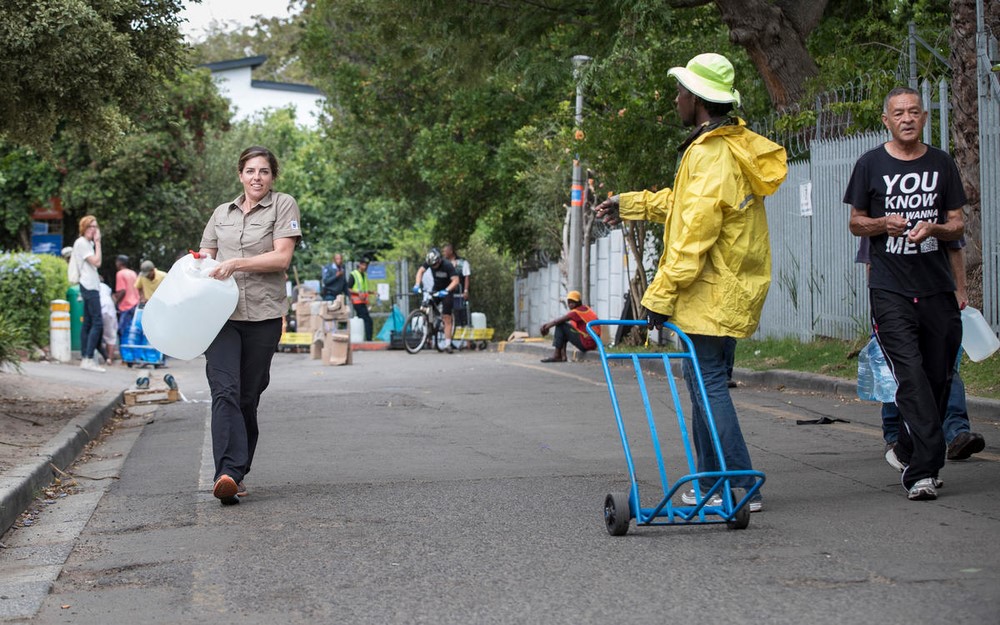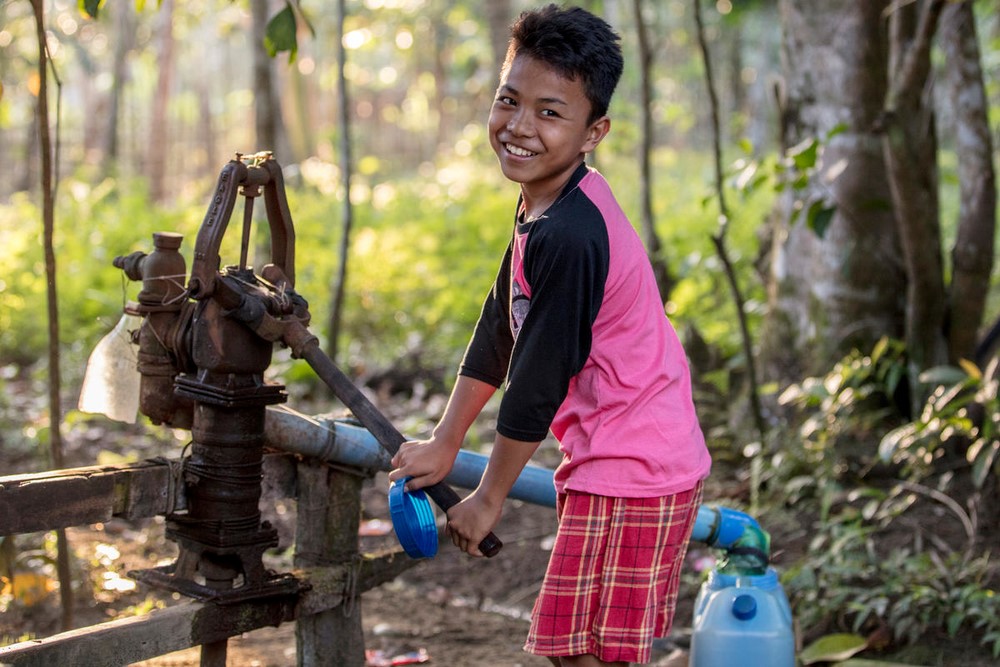Day Zero: Preventing a Water Crisis in Metro Manila
March 2019
As the summer heat plows on and the water shortages continue, the people of Metro Manila are eager for a solution. Where Cape Town found themselves deep in a water crisis last year, they were able to pull themselves out and avert the unthinkable. How did they prevent Day Zero, and what can we in the Philippines learn from our South African friends?

A WWF employee carries a jug of water alongside Cape Town citizens. Massive public initiative helped put a stop on Day Zero in the South African city. Photograph © James Suter / Black Bean Productions / WWF-US
What it Took to Stop Day Zero
Cape Town today is a different place compared to what was slated to come back in 2015. Water levels have returned and residents can enjoy a drink knowing that there will be another one to come. But how was Cape Town able to put a stopper on Day Zero?
“In Capetown everybody had to save water,” says Pagaduan. With a date set for the impending water crisis, the city government scoured the surroundings for sources of water that remained untapped. Instead of merely looking for alternate sources of water, however, the people of Cape Town took it upon themselves to reduce the amount of water their city was consuming. This meant looking at their own actions – and the people of Capetown were up to the task.
At first, progress was slow. Policies to curb water consumption were rolled out as early as 2015, but they were not enough to keep dam levels from dropping further and further. Eventually, however, citizens took it upon themselves to cut back on their usage as much as they could. Stories of Cape Town citizens commuting to nearby springs to collect drinking water and washing dishes with hand sanitizer instead of water were testaments to the people’s willingness to prevent the coming crisis. Industries got water-smart, too, such as the local agricultural sector, with farms choosing to irrigate at night so as to lessen the amount of water wasted away due to daytime evaporation. By 2018 consumption had dropped to the point where water could once again return to Voëlvlei Dam.
With the drought now over, water returned to South African reservoirs. Dam levels returned to 70% by September of 2018. Now armed with a diverse array of water sources and through the commitment of its citizens, water security returned to Cape Town.

A young boy fills a jug with water from a community well. As precarious as the situation may be, hope for water security remains in the concerted actions of the people, of communities and governments and of the private sector. Photograph © James Morgan / WWF
In the Face of Impending Water Crisis
Capetown may have been able to avoid the coming of Day Zero, but the question is whether or not Metro Manila will be able to do the same.
“The experience of Capetown is a reminder that we should work on our long-term planning,” says Pagaduan. Capetown, despite being surrounded by sources of water, fell into water crisis due to a lack of long-term planning that left water resources taken for granted. The same could happen in Metro Manila – no matter the proximity of watersheds and the seas, day zero could come by virtue of improper preparation.
“If we don’t look at things from a longer perspective – especially through a climate lens – we may very well have a similar situation here in Metro Manila,” reminds Pagaduan.
Solutions to prevent water crisis need to consider both the technical and the social side and should come by means of both government policy and social change, insists Pagaduan. Pressure from the government – for the adoption of water-efficient technologies, for example, or for the promotion of conservative attitudes toward water resources – should be coupled with social initiatives to cut back.
Cities like Capetown and Metro Manila may appear to have nigh-unending sources of water, but it is still a finite resource. As the effects of El Niṅo take its tool, questions arise as to how long our water supplies will last. Through proper planning and with the initiative of both the people and of governments alike, we may just put a stopper on Day Zero.
Part three of a three part story series. Read part one here and part two here.
For more information, please contact:
Communications & Media Manager Mr. Dan Ramirez (dramirez@wwf.org.ph)
